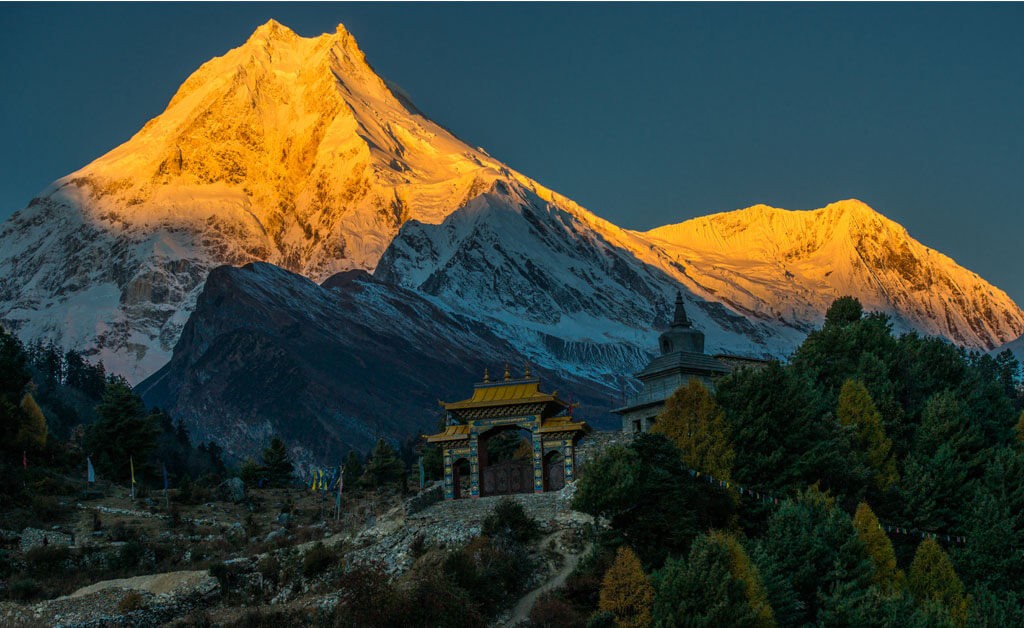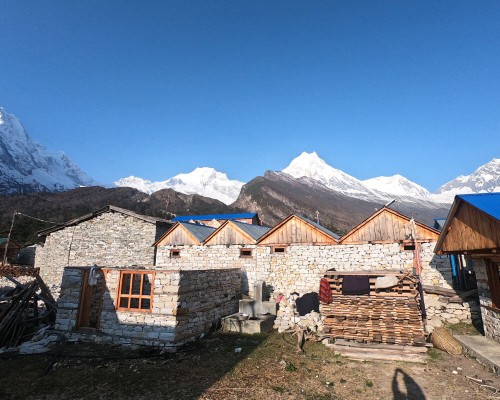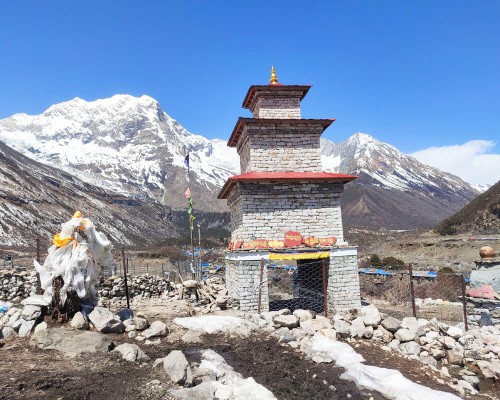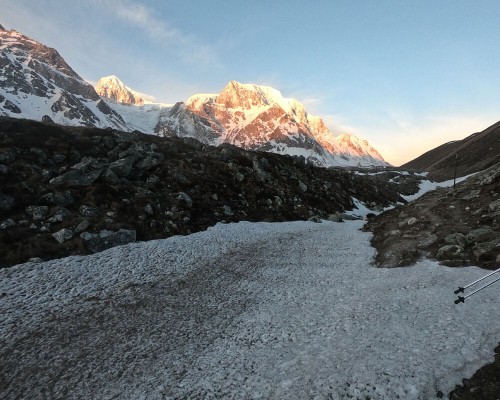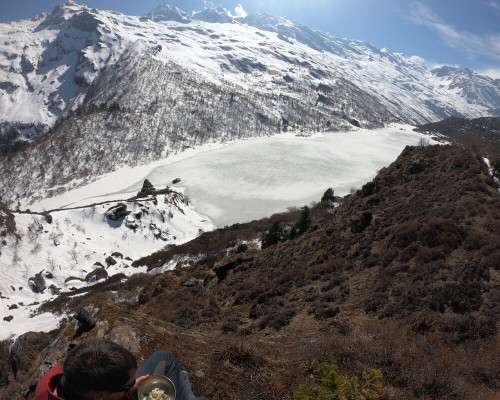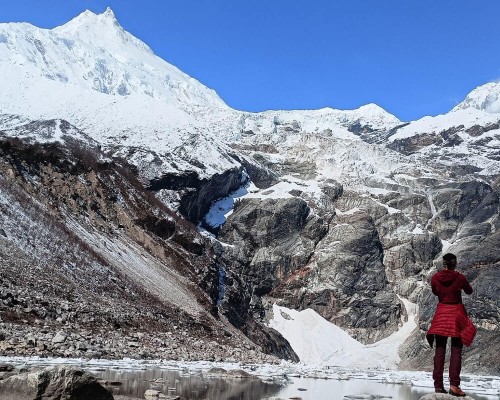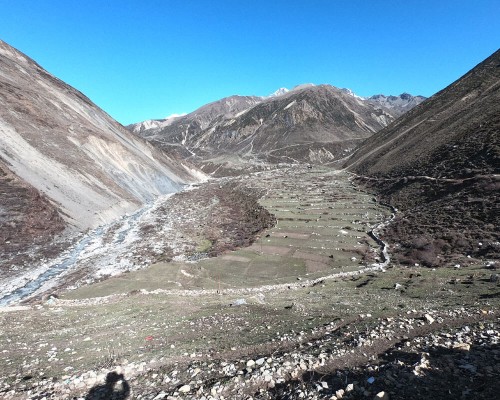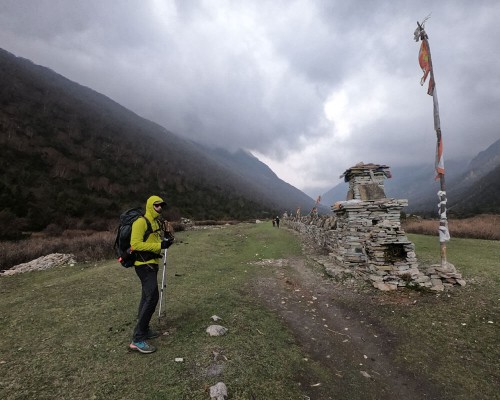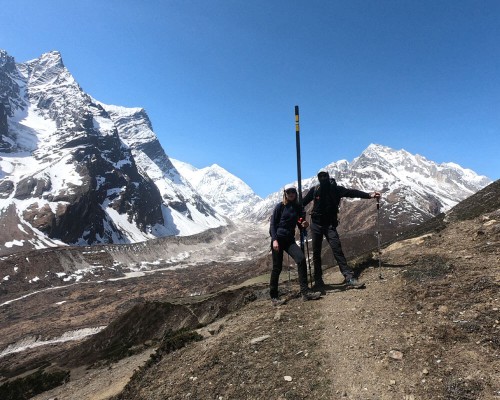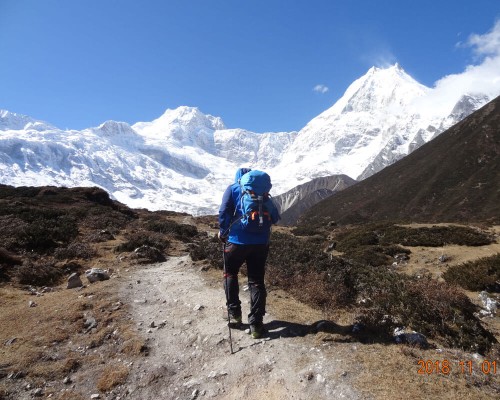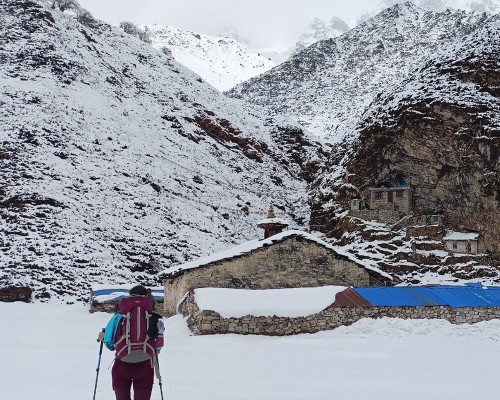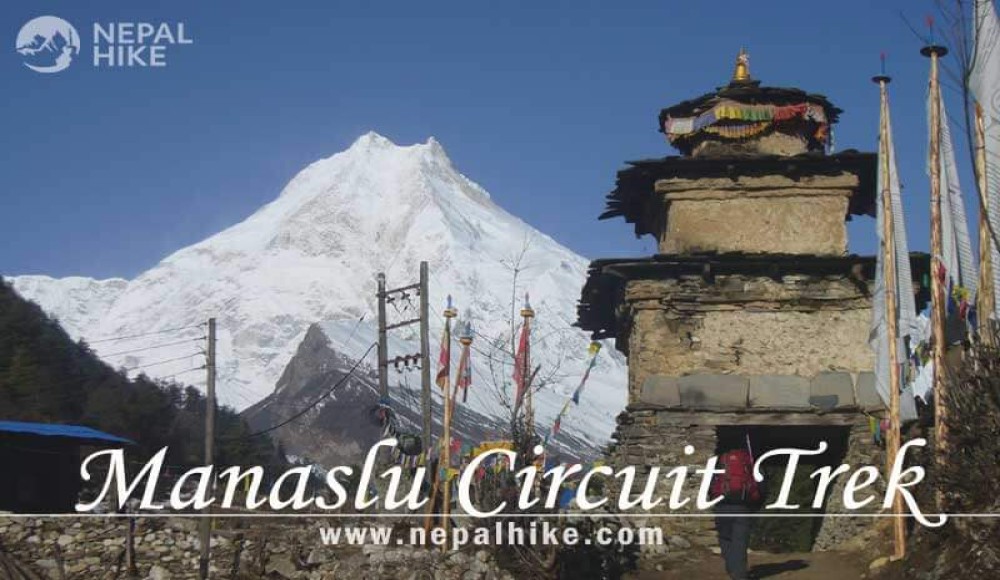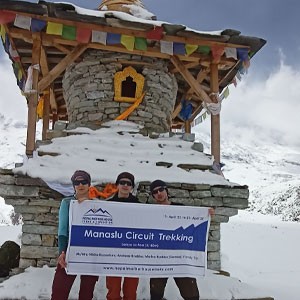What is the Manaslu Circuit Trek all about?
The Manaslu Circuit Trek is a trekking route that circles Mount Manaslu, the eighth-highest mountain in the world and crosses through the Larke La pass. This trek is all about discovering other cultures, lifestyles, languages, foods, daring adventures, breathtaking natural scenery, and making a ton of wonderful memories.
Manaslu Circuit is not only about a thrilling adventure between mighty mountains. Moreover, the trek features cultural and religious values too. This trek is a golden opportunity to experience distinctive Tibetan culture and tradition.
Not only that, the trip takes from developed cities to the rural areas of Nepal. From the lowlands of Arughat to the soaring height of Larke La (5,160). Also, it provides chances to visit multiple Buddhist monasteries as well as Hindu temples.
The people of Manaslu are enriched by art, culture, and religion. On most of the trail, you can see the Mane wall with a Buddhist Mantra, attractive Chorten, an ancient monastery, and other Buddhist religious landmarks, which make your soul holy. It is prohibited to fish and hunt on this holy site.
How beautiful is Manaslu Circuit Trek?
The majority of people believe Manaslu is an alternative to Everest and the Annapurna regions. However, we believe that Manaslu is a unique Himalayan realm with a lot to offer. Neither Everest nor Annapurna can match their unique beauty and values.
There are reasons for being in a restricted area. You will find it when you visit Manaslu.
The view of Manaslu (8,163 m) is amazing during sunset and rise, as are other peaks. Some 7 thousand like Himalchuli, Ngadi Chuli, Shringi, Annapurna II, Lamjung Himal, and Ganesh Himal, along with some 6 thousand like Langpo, Saula, Buddha Himal, and Samdo Peak, make your trip unforgettable.
The Manaslu Circuit Trek blends adventure, a rich culture, and beautiful alpine scenery. The Manaslu Trek is growing in popularity because of its unspoiled beauty, distinct culture, tradition, heritage, and way of life.
Let's talk about the route of Manaslu Circuit’s trail:
The recently opened Manaslu Teahouse Trek starts at Sotikhola or Machhakhola after driving from Kathmandu (changing buses in Arughat) and ends at Dharapani, crossing over the Larkya La Pass (5,160 m).
The trail follows an ancient salt trading route through the Budhi Gandaki river bank and jungle, with lower villages such as Machhakhola, Jagat, Philim, and Rana. Those villages are mostly inhabited by the Gurung ethnic group.
The trail follows the riverbank, making a deep gorge and spectacular views of mountains to the higher villages of Namrung, Lho, Samagaun, Samdo, Dharamshala, and Bhimtang via Larkya Pass. As Manaslu has recently opened to tea house trekking, there are many places that only a few trekkers have visited yet.
After Larkya La, the place will be different from the Manaslu region. Even though you will only be there for a few days, you can still get in touch with nature. The trail passes through some villages like Bhimtang, Goa, Tilje, and Dharapani.
To make your trip different from other trekkers, Nepal Hike is always concerned with exploring new places for a day hike side trip. It is an incredible day hike to the Kal Tal (Kalchhuman Lake) from Prok Village, visit Hinung Gumba from Lihi, and explore the Tibet border at Ruila La Pass at an elevation of 4,998 meters from Samdo village.
All required permits for Manaslu Circuit Trek. Cost details
Manaslu is listed as a restricted area of Nepal. That means it requires special permits, which can be obtained by registered travel companies only. Also, permits for conservation areas are needed to trek inside Manaslu.
The first permit is the Manaslu Restricted Area Permit (MRAP), which is obtained from the Department of Immigration. The price is different according to month: From September to November per week, it is $70 and $10 per day for additional days, and From December to August per week, it is $50 and $7 per day for additional days.
Likewise, the Manaslu trek requires permits from the Annapurna Conservation Area (ACA) and Manaslu Conservation Area (MCA). They cost $30 for each and $10 for the SAARC countries.
Manaslu Circuit Trek: Duration and Coverage
Manaslu Circuit Trek can take a minimum of 11 to 20 days. Our 13 days will be best to explore most of the attractions around Manaslu. The duration depends on the side trips, acclimatization days, and rest days. Also, arrival and departure plus preparation day can add more days to the itinerary.
The Manaslu Circuit Trekking route is spread over 177 kilometers (110 miles) from the remote northern part of Nepal to the Tibet border, gaining a maximum elevation of 5160 meters (16929 feet) at the top of the Larke La Pass. However, if you would like to explore the hidden Tsum Valley and Manaslu side trip, the trek can extend for 18 days, also known as Manaslu Tsum Trek.
Transportation in Manaslu Circuit Trek
Manaslu is accessible only by road. Multiple public buses leave in the morning from New Buspark, Kathmandu, to Arughat. After reaching Arughat, you have to change to another bus to drive to Soti Khola or Machha Khola.
While returning, jeep services are available from Dharapani. Those jeeps are only up to Besisahar. After Besisahar, there will be plenty of microbuses that go to Kathmandu.
Instead of public buses, you can hire private vehicles like Jeeps and SUVs. It can directly take you to your destination. It will be quicker and easier in comparison to public buses. But it will be costly.
Accommodation during the Manaslu Circuit Trek
As the Manaslu trek is a tea house-based trek, the accommodation during the trek is Tea Houses. Tea houses are commonly used for food and overnight stays.
The tea house is a basic accommodation in the Himalayas that provides room and food services. Nowadays, they are providing other services like Wi-Fi, cold and hot showers, and other facilities too.
You can find some standard lodges in lower towns. They are made up of concrete and are usually bigger than tea houses. Also, it has more room availability and more services than tea houses.
Food in Manaslu Circuit Trek
Usually, every tea house provides food service too. Breakfast and dinner will be served at the same tea house. But, for lunch, sometimes it can be on the way while trekking. Talking about the menu, tea houses have unexpected menus. They serve a wide variety of foods, including Nepali, Tibetan, and some continental foods. You can choose wisely and have your favorite treat. But don’t expect fancy foods like in Kathmandu. Along with food, they also have beverages. From multiple hot drinks to cold, inks,. They also have alcoholic beverages.
Weather in Manaslu Circuit Trek
The weather in the Manaslu region differs according to the elevation. The higher part is always cold. Whereas the lower part depends upon the season. It is warm in summer and freezing in winter.
Also, the region has rainfall during the monsoon season. Similarly, snow covers most of the parts during the winter. But in spring and autumn, the weather is more pleasant and the visibility is really clear.
best time to travel to Manaslu Circuit
All of Nepal's seasons have an impact on the Manaslu region, which makes spring and autumn the ideal seasons to trek the Manaslu circuit.
Especially in autumn (mid-September to mid-December), it is pinned as the best. The Nepali Government also charges extra dollars for the permit this season. In terms of the spring season, it is also best with flowers blooming. But you might get some snow on the trail and face light rains.
Trekking Gears for Manaslu Circuit Trek
There are a bunch of things you should carry for the Manaslu trek. You have to take clothing that is suitable for trekking. Also, some gear is required for some challenges on the trail.
Some of the gear and equipment are hiking bags, trekking poles, down jackets, sleeping bags, microspikes, hiking boots, and many more. There are still lots to mention on the list; check the packing list for Nepal for more details.
Manaslu Circuit Trek Map
The map of the Manaslu Circuit Trek indicates the route we'll be traveling. It displays the location of our accommodations. It is also helpful to locate various locations like monasteries, passes, base camps, and many more. The Manaslu Circuit map is available under the section on trip maps.
A Brief itinerary of Manaslu Circuit trekking
Here is our outline itinerary of the Manaslu Circuit trek. The route of the trek begins from Machha Khola and ends in Dharapani.
